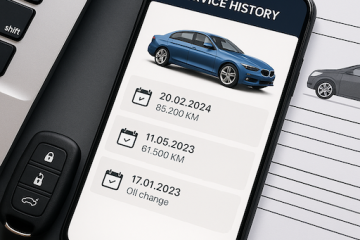Vehicle Data API Integration Tips

In today’s digital age, the automotive industry is rapidly embracing the power of data to provide better user experiences. Vehicle Data APIs play a crucial role in connecting software and apps to leading sources of vehicle data – including specifications, technical details, valuations, forecasts and history checks.
If you are building a website or a software application it is highly likely that you will be using a Vehicle Data API to power key aspects of your solution. Here are 5 essential tips for a smoother integration:
1. Define Your Objectives for a Vehicle Data API
Before diving into integrating a vehicle data API, clearly define your objectives and understand the specific data points you need. Are you looking to build an inventory management system, appraisal tool, or car buying website – or something else? Defining your goals will help you scope your API requirements and the data points you are likely to need.
2. Choose the Right API Provider
Selecting the right API provider is crucial for a successful integration. Consider factors such as data accuracy, reliability, security measures, and the level of support. Look for reputable API providers that offer comprehensive documentation, a sandbox environment, robust security and first rate support channels. If you can identify a single provider who is able to meet all, or most of these criteria it is likely to lead to significant savings in time and development costs.
You can check out this list of One Auto API data services.
3. Understand the API Documentation
Thoroughly read and understand the API documentation provided by the API provider. It serves as a valuable resource to comprehend the available endpoints, request/response formats, authentication methods, rate limits, and any specific requirements or limitations. If your chosen API provider has a sandbox environment, this is a good point in the process to run some tests.
4. Implement Robust Security Measures
Vehicle data is sensitive information, and it is crucial to prioritise security during the integration process. Implement strong data security mechanisms using API Keys to control who is able to access which services and apply IP restrictions, rate limits and quotas to mitigate the risk of misuse. The best API platforms include this functionality.
5. Test and Monitor Your Integration
Thorough testing is essential to ensure the seamless functioning of your integration. Conduct comprehensive testing at different stages of the Vehicle Data API integration process, including data retrieval, data processing, and data visualisation. Being able to monitor all data sources in a single audit log will significantly reduce your support costs over the longer term. If you are working with multiple suppliers then you should factor this into your development plans.
Conclusion for Integrating Vehicle Data API’s
Integrating a Vehicle Data API opens up a world of possibilities for leveraging valuable vehicle data to drive innovation, but it is vital to choose the right API provider if you want to save time and money during initial development and on-going maintenance of your solution.


